Heather and I visited the Thompson’s Mills State Heritage Site next to the old townsite of Boston, Oregon. The closest present-day town is Shedd, Oregon which is a couple miles away.
This mill operated continuously in one capacity or another from 1858 until 2004 when the Oregon State Parks Service bought the facility and its original 1858 water rights. With the purchase of the property and the ending of commercial operations, the Calapooia River once again has salmon running up to its highest tributaries. Before commercial operations ended, the last owner owned almost 100% of the water rights of the Calapooia River and diverted almost all of its water through the millrace to the old water turbines sitting in the basement of the building.
An Oregon State Parks ranger named Tom showed us around the facility on our own private guided tour. In the foreground is an old scale for weighing vehicles and wagons. To the left is the grain silos. To the right is the mill building and the closest windows on the right keep the elements out of the old mill office.
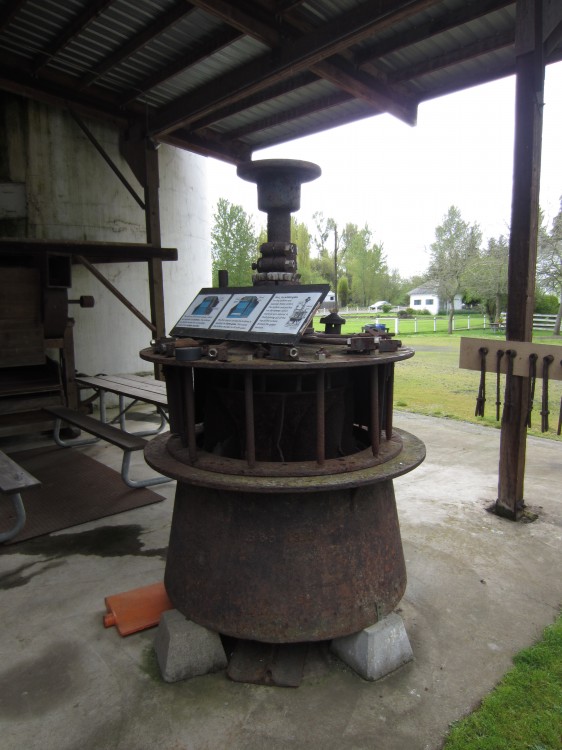
An old turbine that used to keep the mill powered.
The sluice gates at the top of the head race.
Our tour guide Tom opens the sluice gates to send water down the head race to the water box and turbines.
The debris grate at the top of the head race. This would separate out the larger sticks and logs from entering the water box below.
Looking down the spillway where water that doesn’t get channeled through the water box and turbines goes. There is a pipe visible in the upper left that in this photo looks a bit like a wooden member. A smaller pipe sticks down lower next to it. The bigger pipe connects to an old toilet upstairs. The smaller pipe I believe came from a sink in the restroom on the main floor of the mill. Yes, until fairly recently people who went to the bathroom in the mill had their waste go straight into the Calapooia River. Tasty!
Also of note is the three pipes sticking out of the left side of the concrete spillway. Those are fish bypass pipes. A screen inside the head race (photo later) was supposed to help shoot the fish out these pipes rather than be ground up in the turbines. It is unclear if they actually worked as designed or not.
Our tour guide Tom showing us the hand-hewn beams taken from the primordial old growth forests of western Oregon when the mill was originally built. One can actually see the individual ax marks on the beams from where they were carved out of freshly felled timber.
Looking toward the southwest corner of the basement. An old wooden ladder hangs from a beam and a few floor planks are missing. During major floods such as in 1996 and 2012, the whole building lifts up and floats. This also leads to rot in the wood. The mill has survived many floods since it was first built and continues to stand as long as regular maintenance is performed. The original mill built in 1858 burned to the ground in 1862 and was rebuilt the same year. The part of the building that this photo was taken in is actually a newer addition put in probably between 1900 and 1930.
The three big wheels stand over three turbines that power the mill.
Water pours down the head race into the water box and through the turbines to power the mill. Just imagine how noisy this must have been when the mill was operating as a commercial venture!
Looking down into the water box. The water from the head race roars into this space and fills up until the turbines start to spin and allow water to pass. This is a high flow, low head turbine setup seen on many mills, dams, and other such setups around the world. The turbine that is lowest in this photo still works and can power the mill. The middle turbine suffered some damage since 2004 and now is rusted solidly in place. The far turbine powered an electric generator from around 1986 until 2004 and (if I remember correctly) also still functions.
This is the fish screen that I talked about several photos earlier. The head race sends the water down from the right of the photo to the water box at the left of the photo. The pipes that allow fish to escape being ground up in the turbine are behind the screen in the upper left part of the photo.
The belt and pulley system stretches from the basement all the way up to the 5th floor of the building in an intricate dance of motion. The grain chutes (such as the metal pipe in the middle of the photo) and elevators (the rectangular plywood box that the chute feeds into on the left side of the photo) run throughout the facility and allow all of the things that would be ground in this mill to be transported throughout all of the different parts of the facility.
Tom showing us where the grain used to be fed down from farmers’ wagons into the mill. The box he is touching has a screen on it that would divert any junk or garbage (sticks, rocks, etc.) from the incoming grain stream. This system is original to the mill and was installed at or around 1862.
The rectangular wooden boxes on the right side of this photo are grain elevators that move grain via little cups on continuous belts up to other parts of the mill.
Looking north in the basement. The chains and belts hanging from the beam in the middle of the photo would have been used to power machinery in the mill.
This generator ran continuously from 1986 until 2004. According to our ranger guide, it was the bane of just about everyone who lived in the Calapooia watershed. Due to the water rights owned by the mill, the mill was able to suck all of the water out of the river and through the water box to turn the turbine that powered this generator. It only produced about 100 Kw of power on average but it took the entire river’s flow to do it. The old mill owner plugged up all of the fish ladders in the area to divert the maximum amount of water possible to this turbine. The old owner would also back water up into the mill race causing flooding upstream and allowing the mill to store water for leaner times in order to keep the turbine spinning. Aside from having many angry neighbors, local, state, and federal officials, the old owner also had to stay on site 24/7 to make sure the turbine kept turning. 18 years without a single day off is a long time to work!
Also visible in this photo is a dirty line running horizontally along the concrete foundation block that the generator sits upon. That is the high water mark from the 2012 floods. There is still a bunch of dirt on the basement floor from the floods last year. During those floods, parts of Corvallis and the surrounding area were underwater.
Looking south along the top of the water box toward the sluice gates and mill race.
Looking north into the oldest part of the mill. This area is currently off limits to the public. The park service plans to finish fixing flood damage (basically make sure that all of the structural members are in their proper places after floating from the water) at some point in the next year or two.
This machine would have been used to screen out junk from incoming grain used to make livestock feed.
Another machine used for screening grain and ground grain.
The machine in the center right of the photo was used to fill bags of grain. All of the tubes in the background were used to auger grain up and down, and blow air around the facility.
Turbine 1 powering a pellet mill, elevators, and other equipment in the mill. Be sure to watch for the worn place in the floor where a man worked for 30-40 years doing the same repetitive task day after day. His entire career was filling bags, turning around, and setting them on a cart.
Looking into an area on the main floor used for making livestock feed. All of the rectangular shapes are grain chutes and elevators. This part of the facility was powered with electricity in later years.
A 20 horse power motor running old mill equipment.
Old supplies for fixing the facility still hanging where they were left when the mill shut down in 2004.
A display detailing how the building was built with mortise and tenon joints, and wooden pegs.
An example of hand hewing timber into lumber used in constructing the mill.
Looking out to the mill race.
Looking north through the west walkway on the main floor of the mill.
An old machine waiting for the day when locally produced and ground grain is tenable once again.
An example of a roller mill used to grind grain.
Heather will now demonstrate the flour making process. First the wheat grain is brought in from the fields on wagons to the flour mill. It is then sifted through a coarse screen to filter out rocks, husks, and other debris from the field.
The good grain is collected and prepared to be ground by the grinding stones.
The top grinding stone is turned in a circle while the bottom stone remains stationary. Grain is fed through the middle and ground flour comes out the sides.
The ground flower is then collected. Interestingly, the grinding stones in this display are commercially available. People are once again making flower on a small scale for at-home use. One might call this “hipster flour.”
The ground flour is then sent through a series of screens to separate out the different types of flour.
The flour in the right tray is whole wheat flour. The left tray has flour like you would find in Cream of Wheat cereal. The flour in the bottom middle box is something akin to pastry flour. This is a very basic example of how flour is made. The full process found in today’s mills involves many more screening and grinding steps, and often involves chemical treatment. If Heather and I were eating much gluten or baking bread, I think it would be pretty fun to have a home flour mill.
A display of old flour bags. Each mill used to have their own brands and designs. People used to make clothing, curtains, toys, aprons, and other such household items from the sacks.
Looking downriver of the mill on the Calapooia River where the tail race and river meet.
Heather standing to the side of a display of Thompson’s Mills feed sacks. In the 1940s with the shift of bread production from the home kitchen to large factories, small mills such as this one either closed up shop or converted to other products. This mill converted to making animal feeds.
Thompson’s Mills Feeds. The Big T Brand.
Many animals in the Willamette Valley were fed with feed that was made at this mill.
Remember the pipes that were pointed out in an earlier photo that came down from the restroom on the main floor of the mill? This is that restroom. Thankfully the park service has built modern facilities a short walk away from the mill building.
This toilet and sink drain directly to the river! The photo in the lower right of the image shows water pouring out of the pipe and into the sluice.
Looking through the main floor of the mill.
This is an old set of mill stones from the McKercher Mill that was located farther up the Calapooia River. These stones may have been the first roughing pass used on hard wheat and other grains before finer stones were used in the grinding process. Both the McKercher Mill and Thompson’s Mills (where these photos were taken) were founded by Richard Finley. McKercher’s Mill was founded in 1852 and Thompson’s Mills was founded in 1858. Richard Finley and his descendants left their mark on the Willamette Valley over the generations. Many Finleys still live in the area. Richard made his original money in the California gold fields and used his money to start these two grain mills in the Willamette Valley just a few years later. These mills shortened the time and distance farmers had to travel to have their grain turned into flour. Before farmers would have to travel for weeks and more than a hundred miles to get their grain processed. After these mills were built, that distance and time was dramatically cut.
These mill stones are much finer. They would be used on soft wheat or on grain that had already gone through other grinding processes.
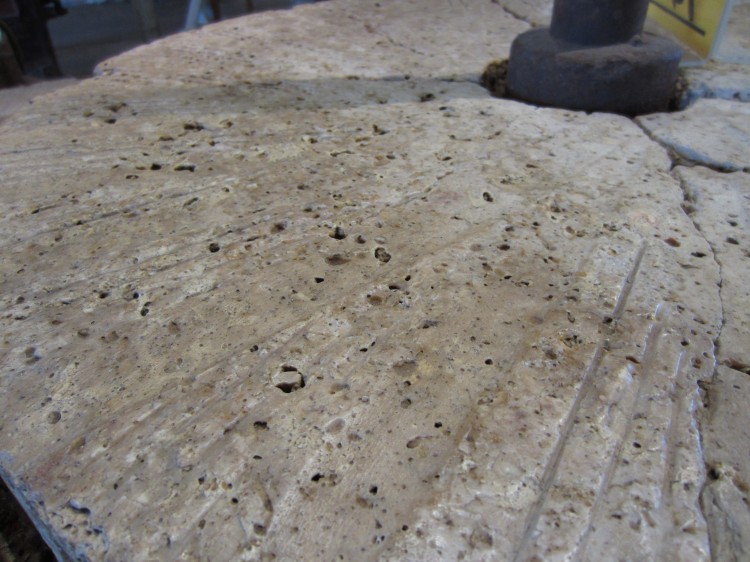
The cuts and marks in the stone were specifically calibrated and periodically tuned up by a man who would ride a circuit between all of the mills in a region to ensure maximum efficiency. This particular stone came from a quarry in France to Connecticut where it was dressed and then sent onward by ship around South America to Oregon and finally on to this mill. It was used for finishing flour. The stone is known as burrstone and was quite sought after during the heyday of small scale flour production. These stones look similar to some grinding stones that I saw in Tunisia.
A belt with cups used for transporting grain and flour from one level of the mill to another.
Examples of belts used to transport grain up the elevators, chutes used to transport grain and flour down, and augers used to transport grain up the chutes as well. The yellowed drawing at the right side of the photo is a schematic of all of the elevators and chutes. It took the first park ranger a year or two to map everything out. This place is very complex!
A closeup view of the schematic showing the elevators and chutes.
Old mill equipment. The pile of mats contains the stamps used to print labels on livestock feed bags. The three smaller machines in the foreground are various electrical devices. The two middle machines appear to be voltage regulators used to change the speed of electric motors. The smallest device to the right might have been some sort of arc lamp.
An American Flag from when there were a few less states.
More old stamps for labeling feed bags.
An example of the old gear and pulley system used in the mill. The vertical bevel gear has metal teeth. The horizontal bevel gear has wooden teeth. If a problem happened that suddenly stopped the turbine, the wooden teeth would sheer off. The wooden teeth were easy to replace and were thus sacrificial.
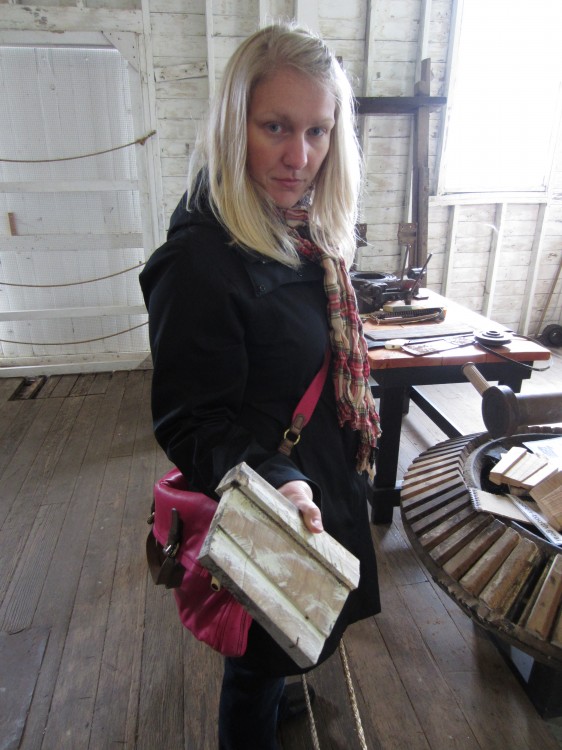
A wooden tooth removed from the bevel gear. Only a few people remain in this part of the world who remember how to make these teeth properly.
Examples of some of the belts used in the mill. Leather and nylon were both used in later years.
It is a bit hard to see but the image etched into the right pane of glass gives a general overview of the mill from the water box up to the top of the mill.
Outside the mill looking at the grain silos. These were added before 1940.
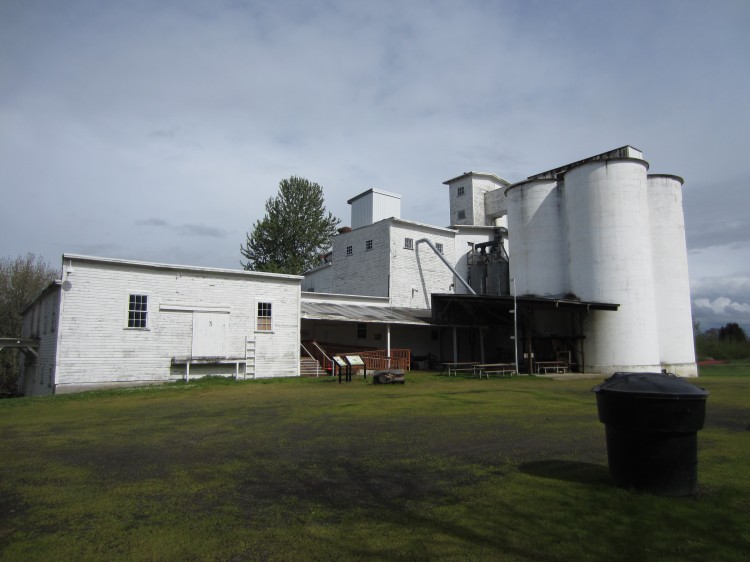 Looking south and east at Thompson’s Mills.
Looking south and east at Thompson’s Mills.
Some old mill equipment rusting in a pile at the edge of the mill yard.
The building in the foreground is the original mill building built in 1862 after the first building that was built in 1858 burned to the ground.
Looking generally north and west at some of the impressive clouds that were meandering through the valley.
Another view of the mill looking more or less south.
The confluence of the Calapooia River and the tail race from the mill.
The classic Victorian mill house built around 1900 that housed the successive generations who owned and ran the mill. A tom turkey was strutting around in the yard.
This tom worked to impress us.
A view of the mill looking north and east. The mill race is visible to the right. The sluice gates are on the right side of the building. The silos are on the left. It is an impressive hodgepodge of construction that was continually improved upon from 1862 until 2004.
This field contains the old platted town of Boston, Oregon. When the railroad came through the area, it bypassed the town a couple miles to the west. The whole town was moved to present day Shedd, Oregon. Aside from some subtle changes in the color of the ground cover denoting where roads once were, very little of this once thriving town remains. It originally sprang up to cater to the farmers who came to have their grain milled and once sported a post office, blacksmith shop, and saloon. Now a few scattered houses built much later and the old grain mill remain.
Our outing to Thompson’s Mills State Historic Site was superb. I highly recommend it for anyone who is interested in Oregon history, the history of the agrarian economy in the western United States, old engineering technology, and anyone who wants to see something that is truly one of a kind. No other mills like this still exist in this part of Oregon and very few across the entire continent are open to the public for free tours. If you have a free afternoon, why not stop at this great Oregon state park?
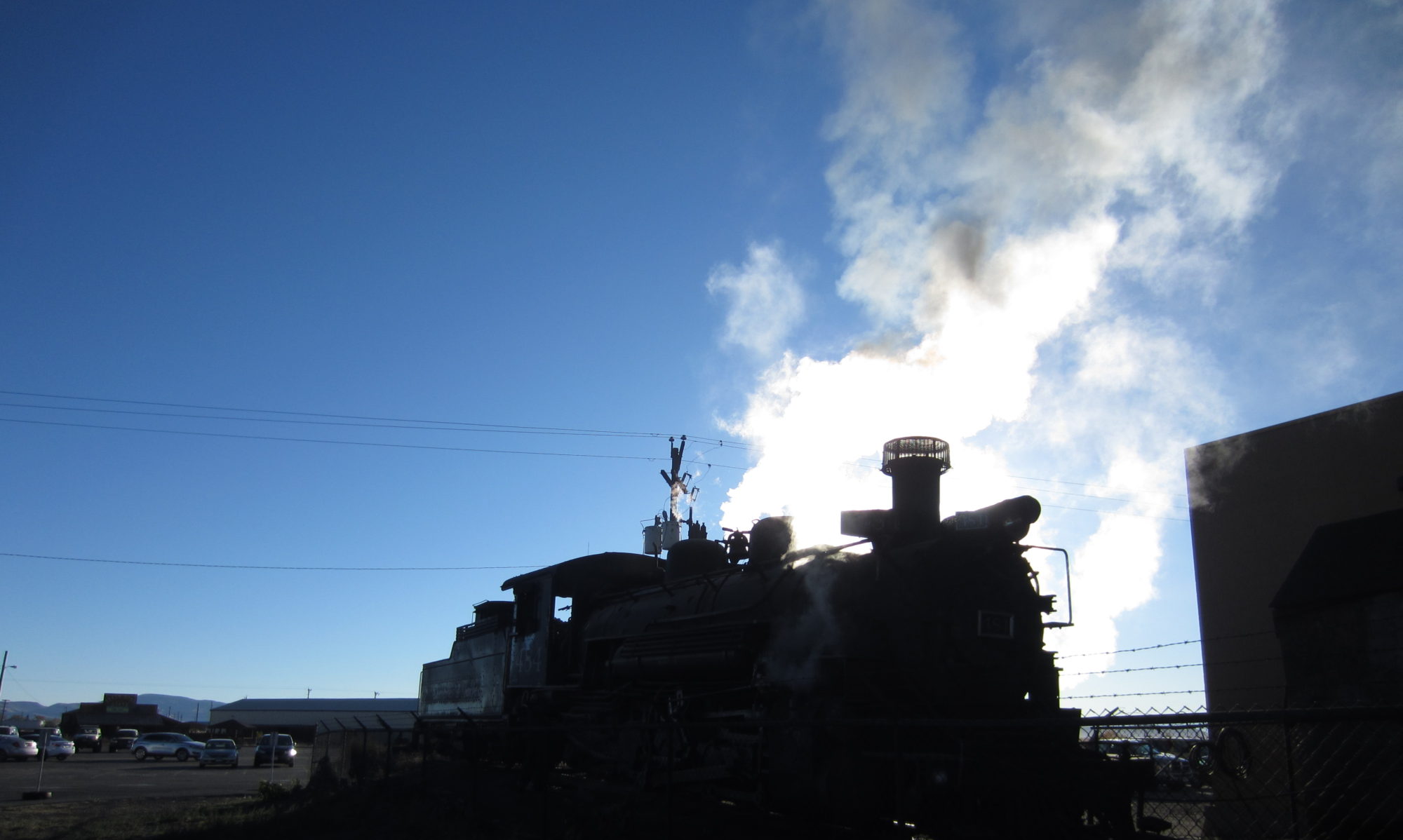
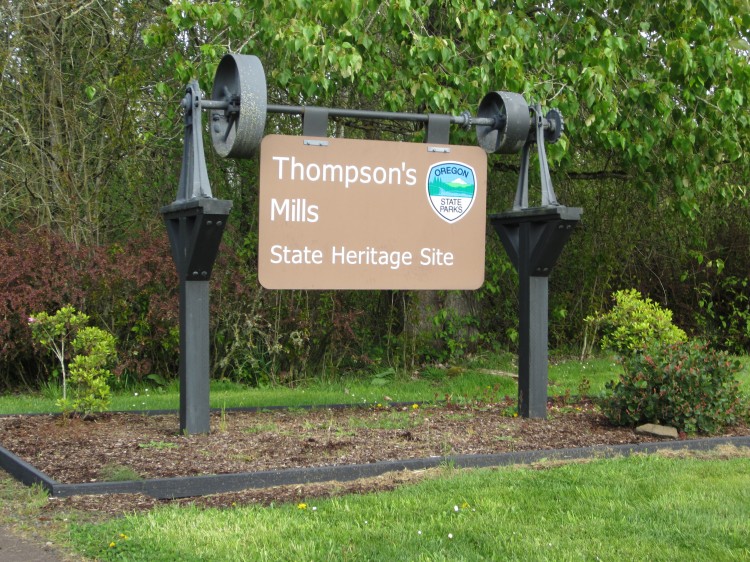
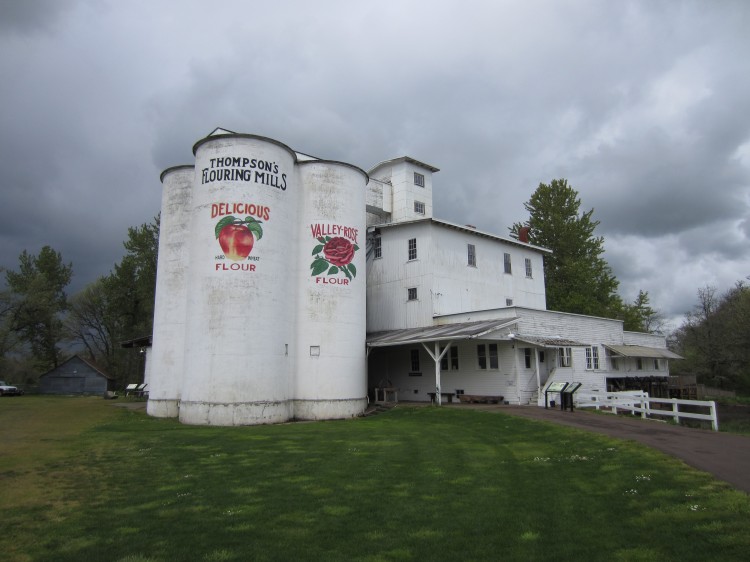
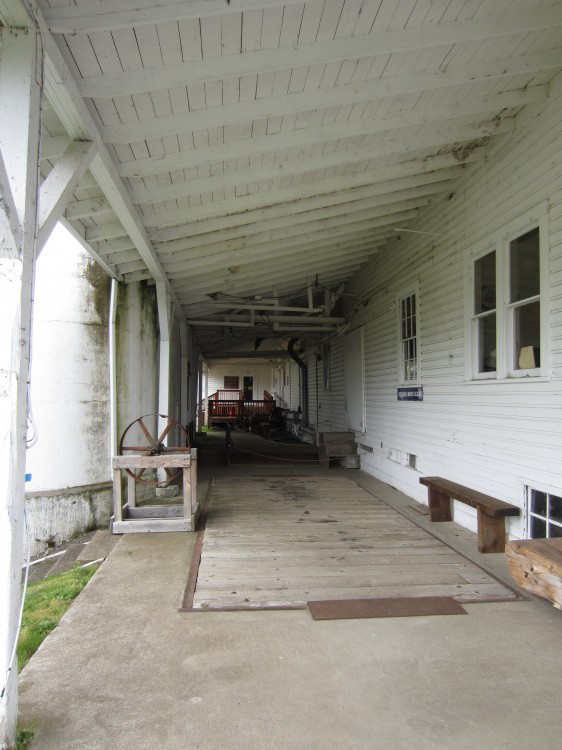
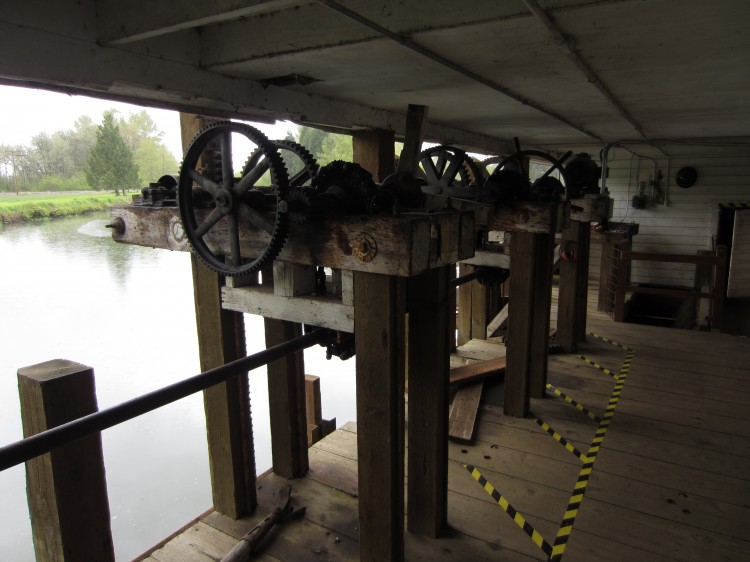
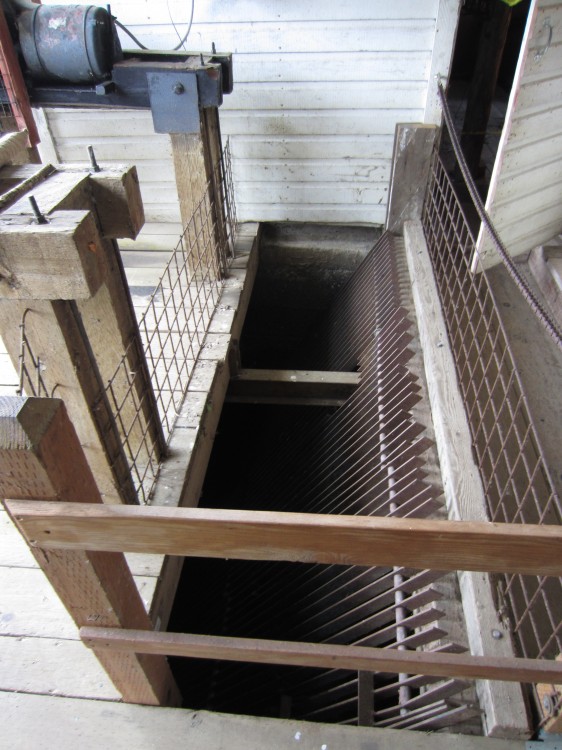
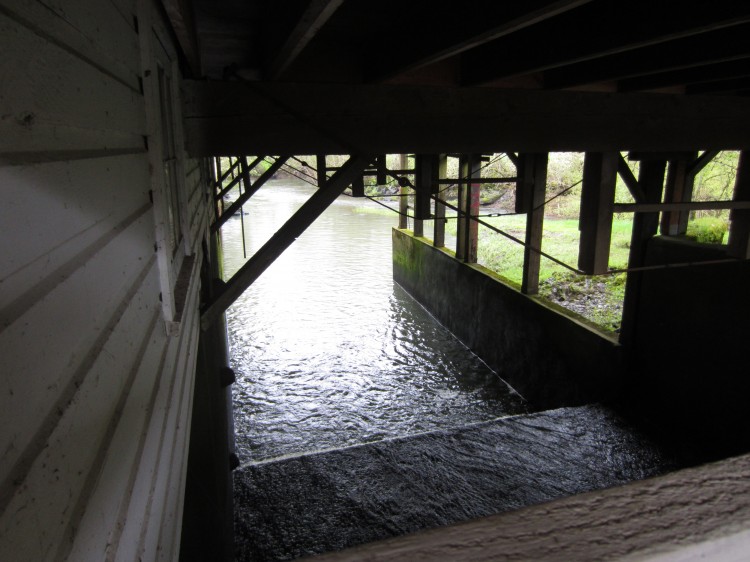
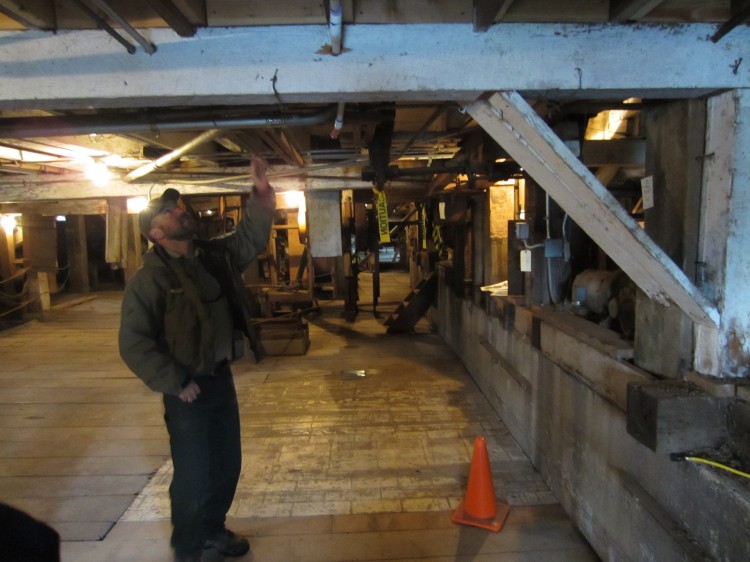

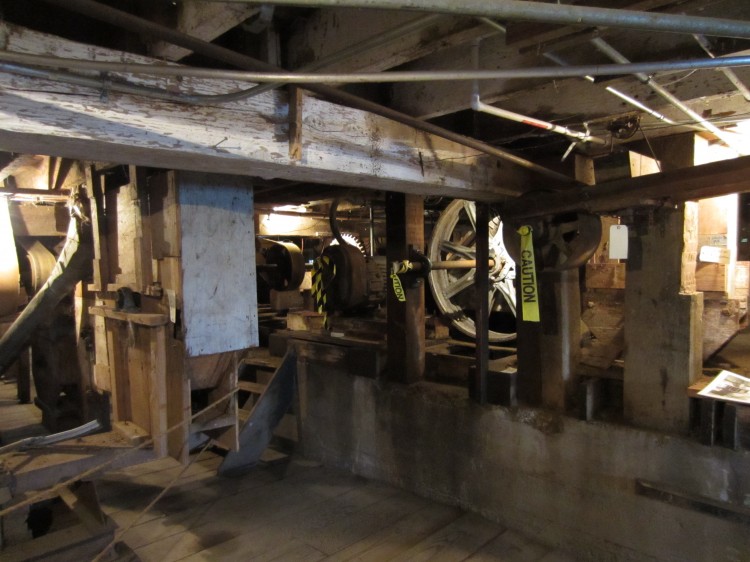
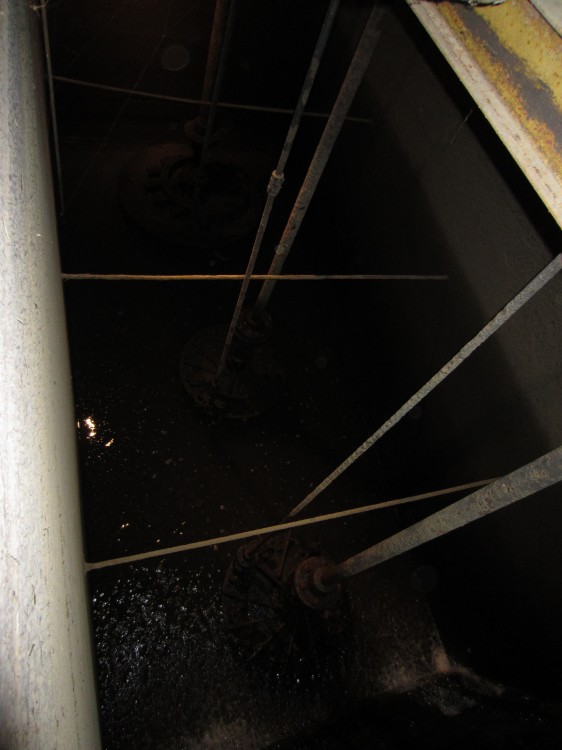
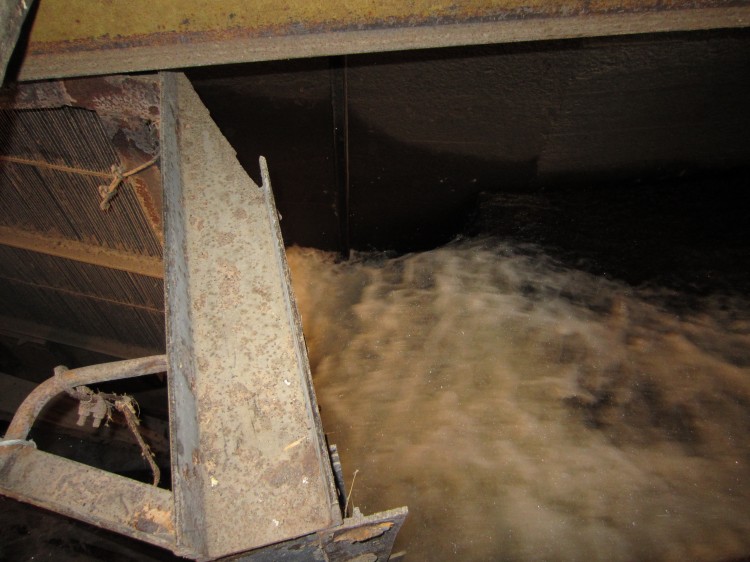
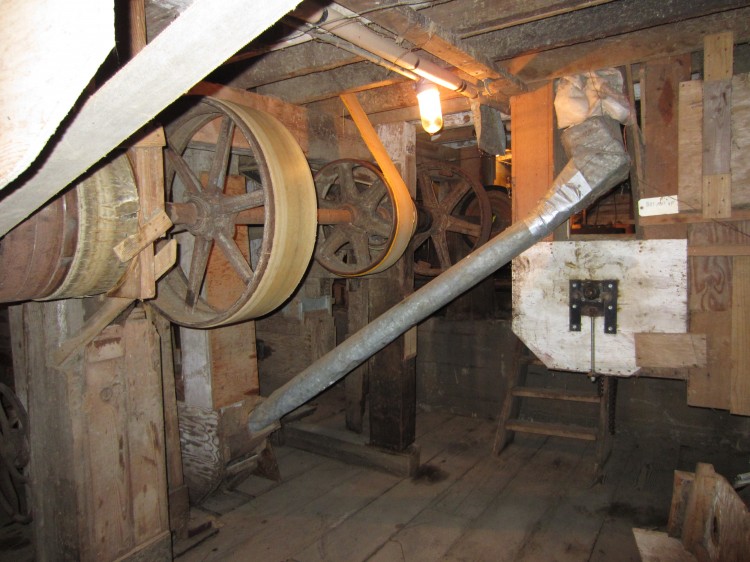
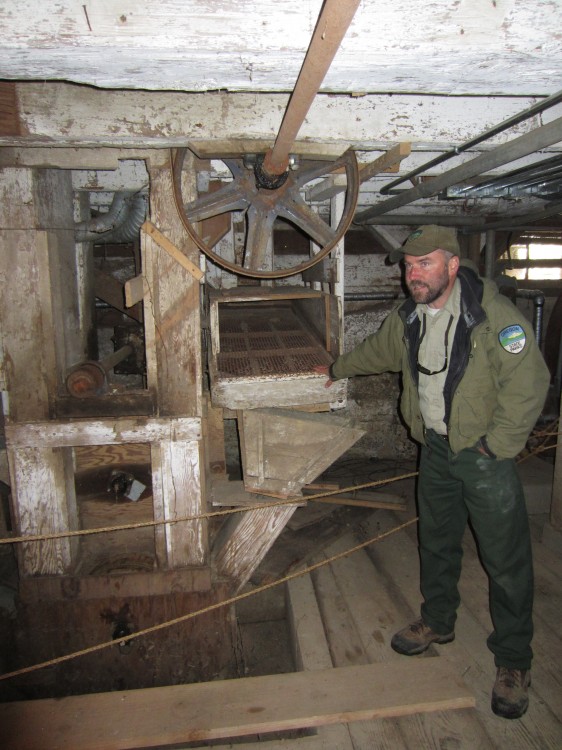
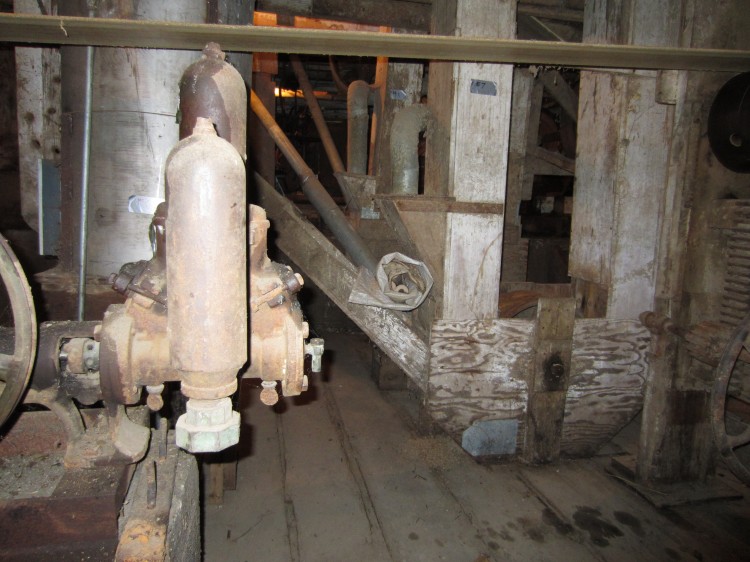
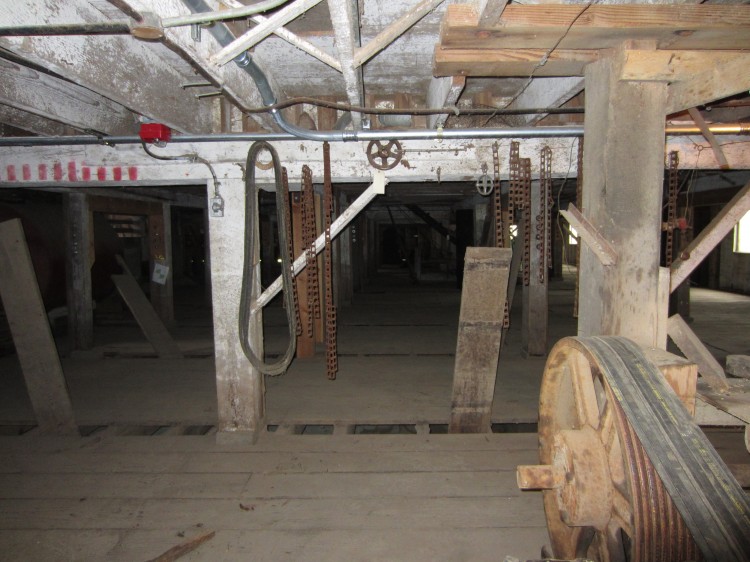
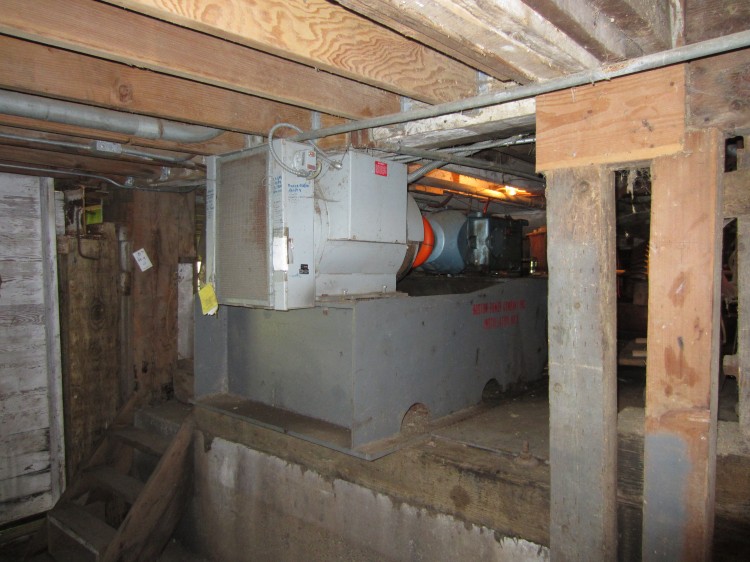
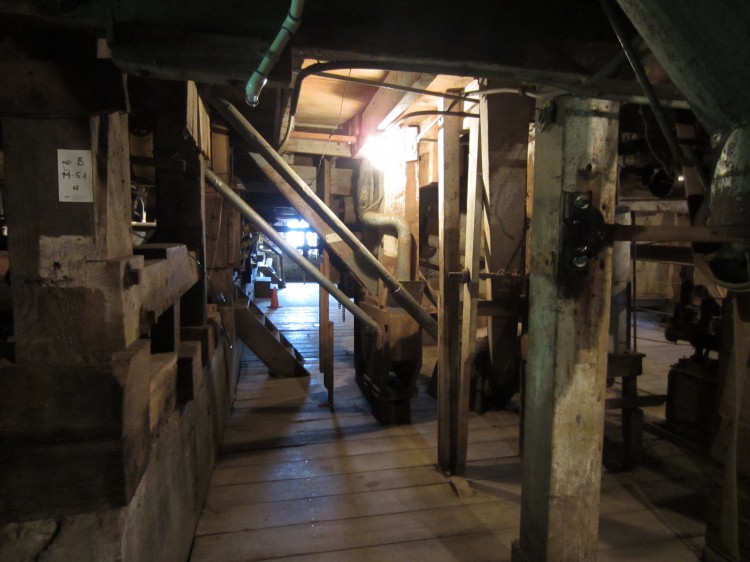
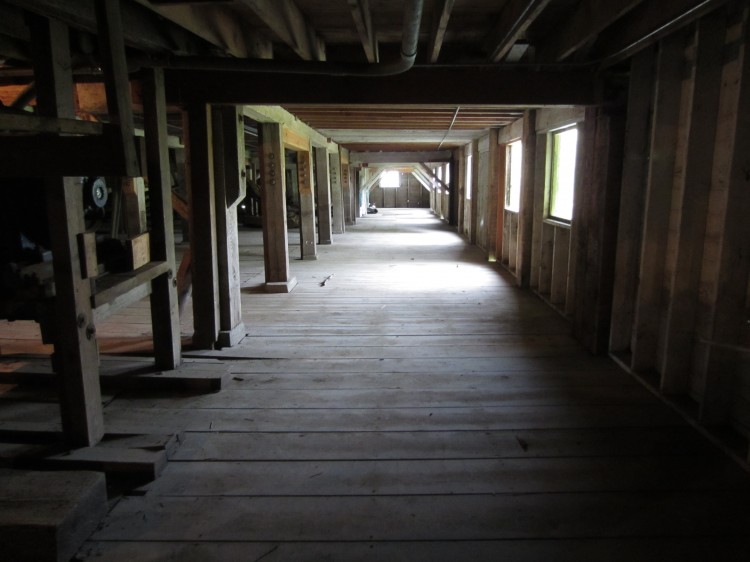
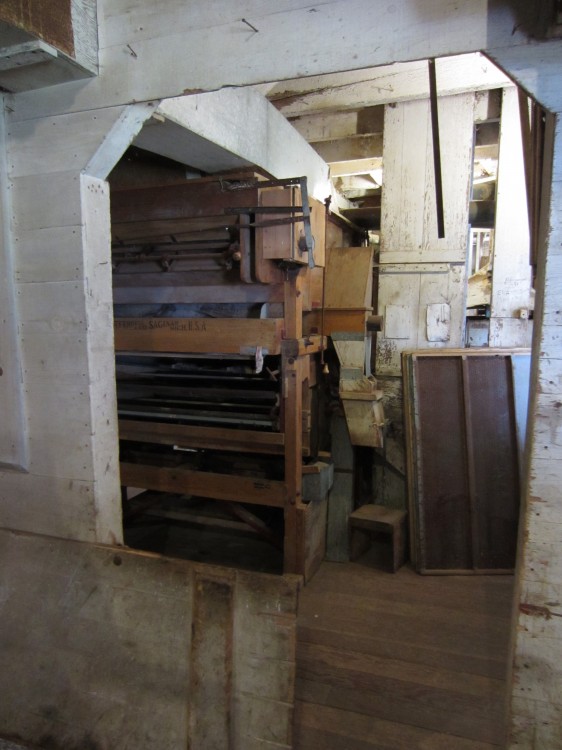

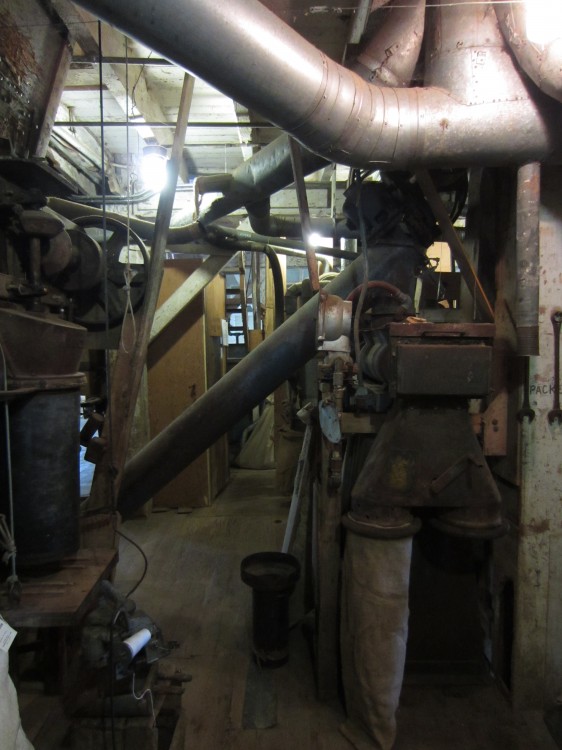
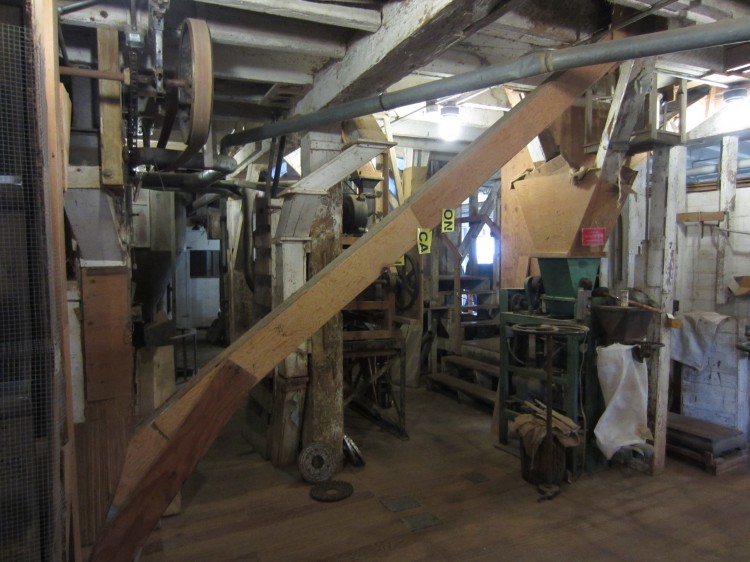
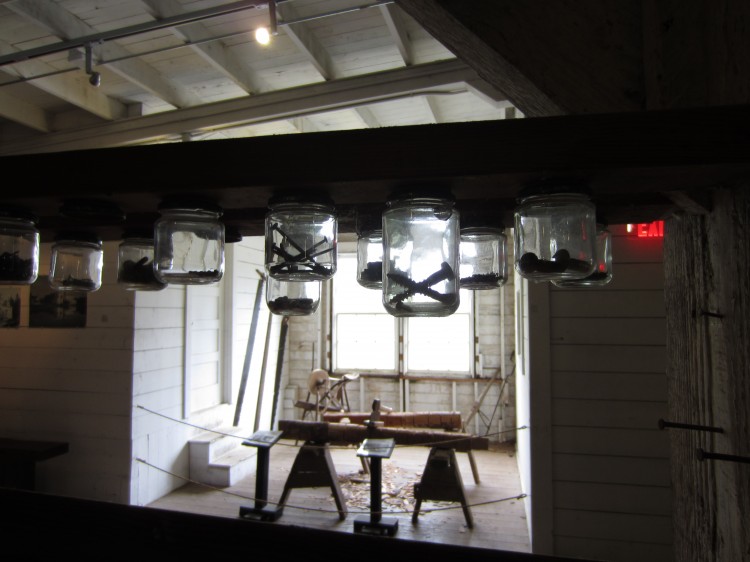
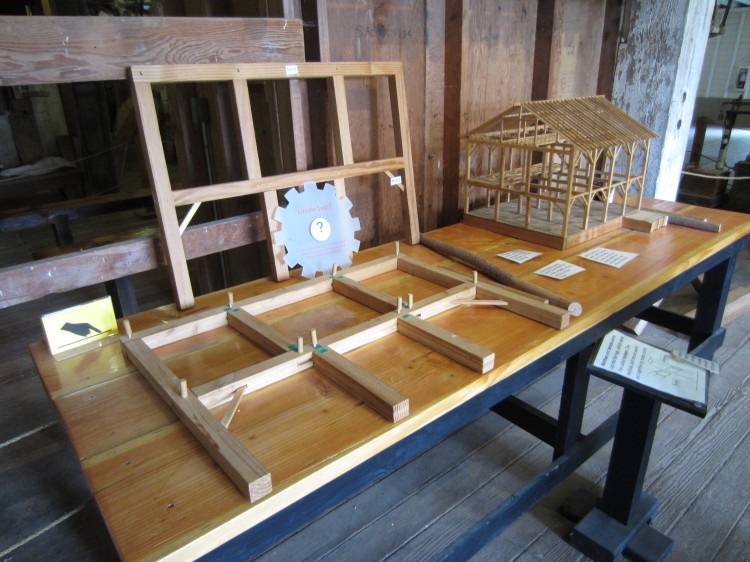
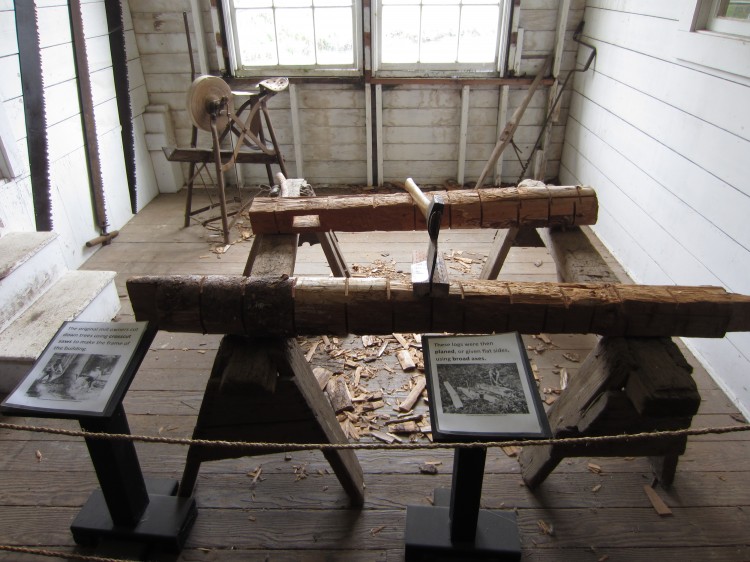
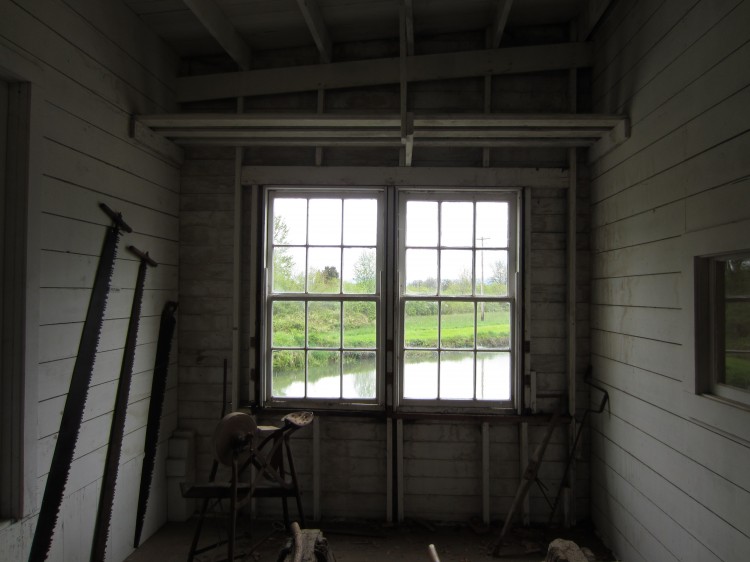
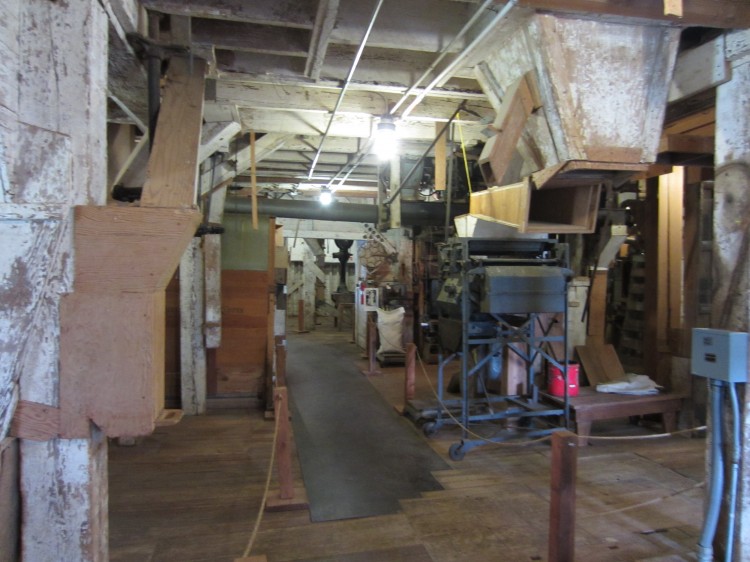
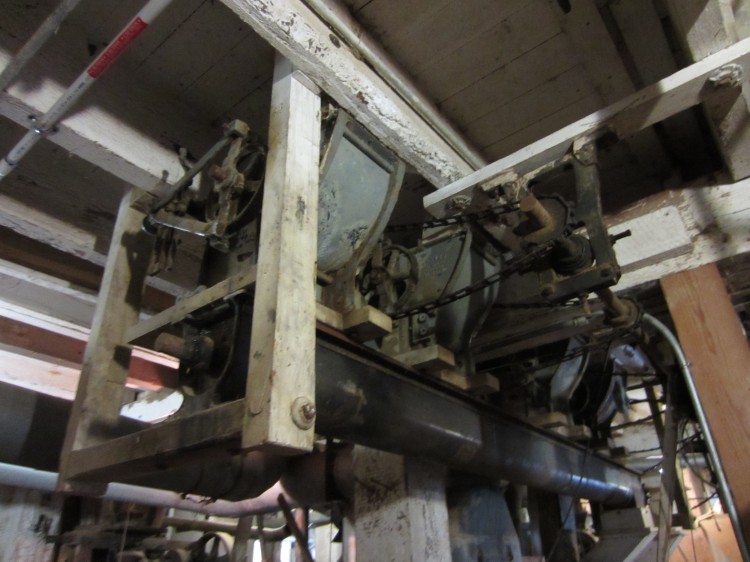
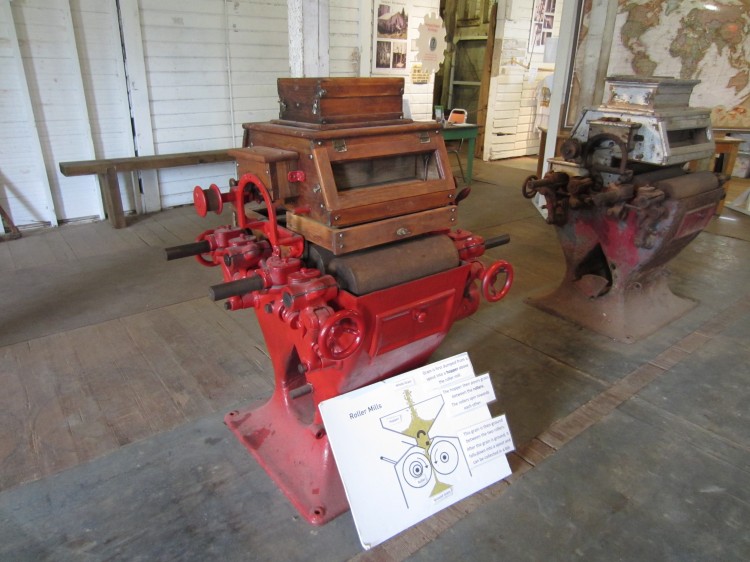
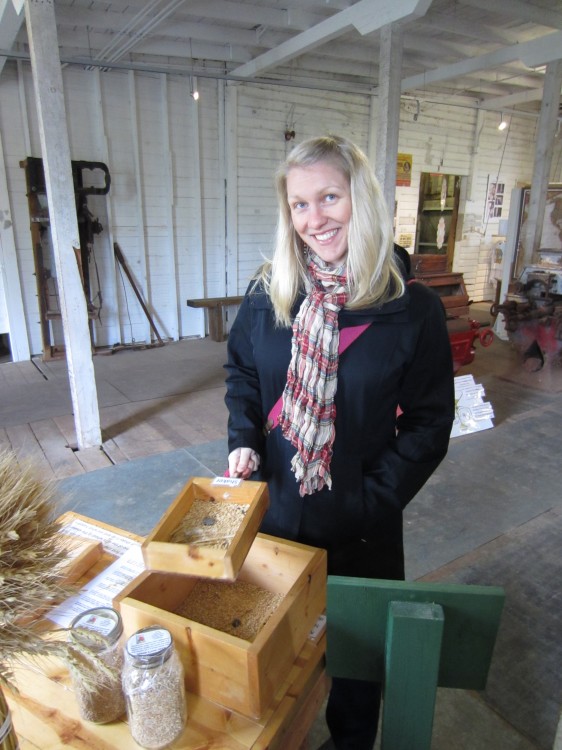
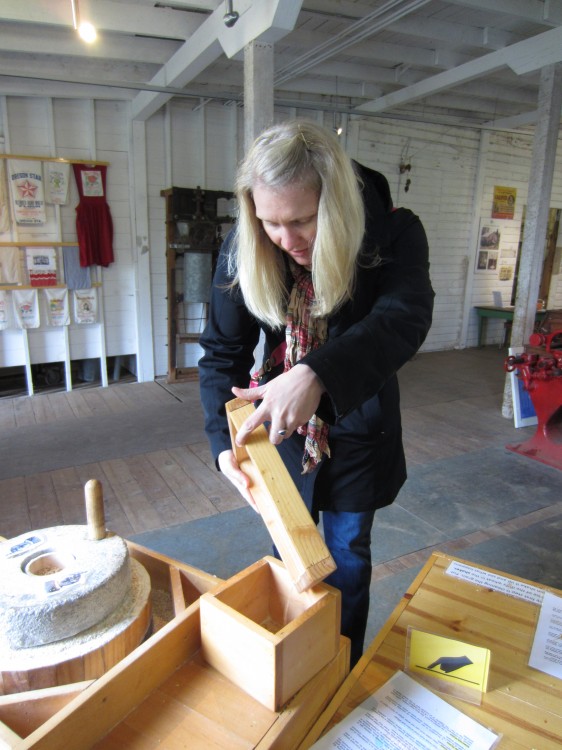
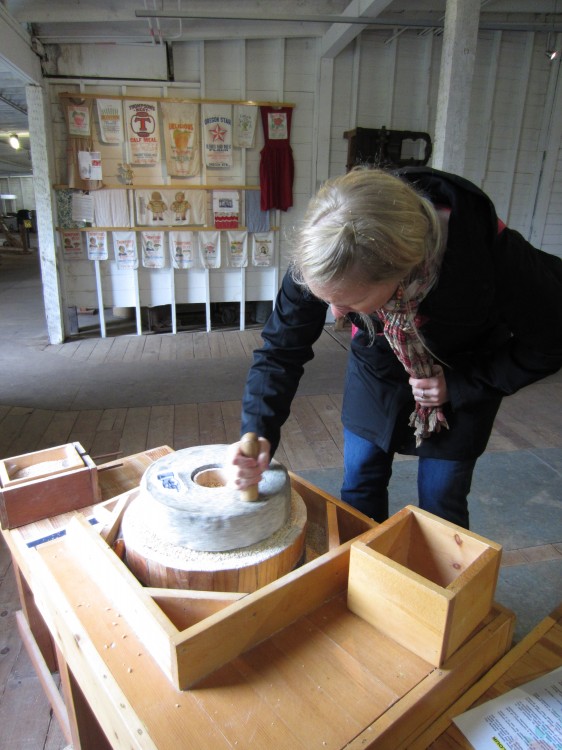
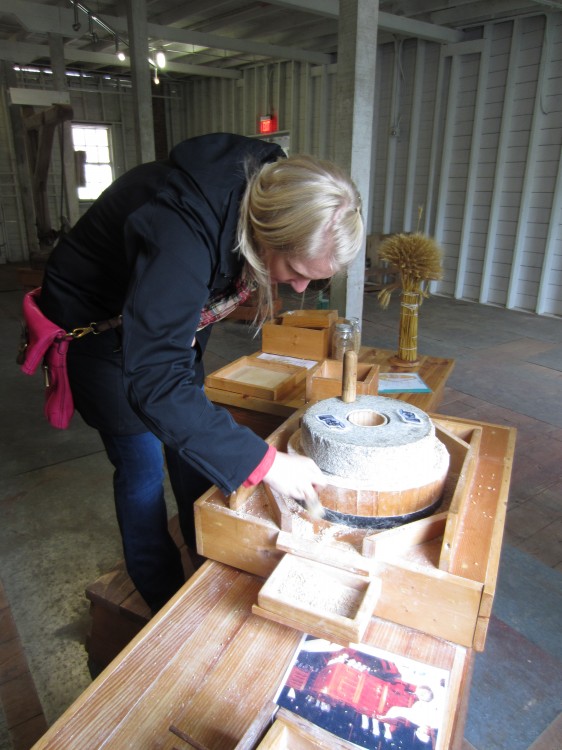
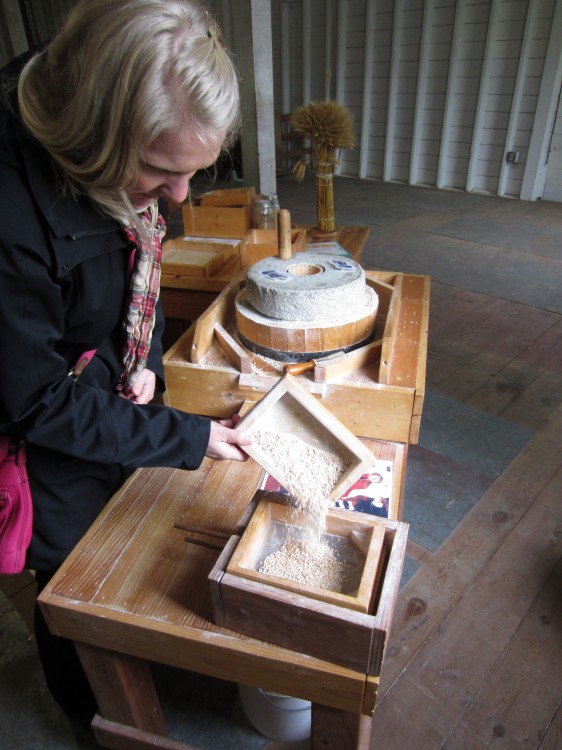
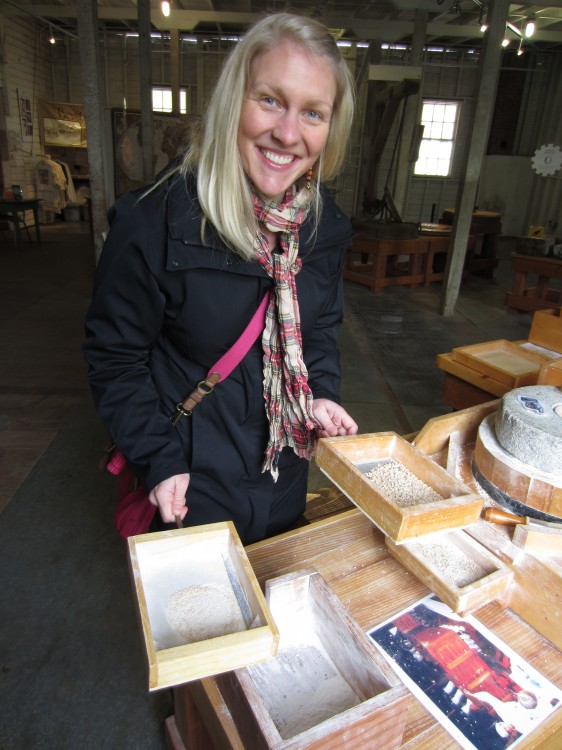
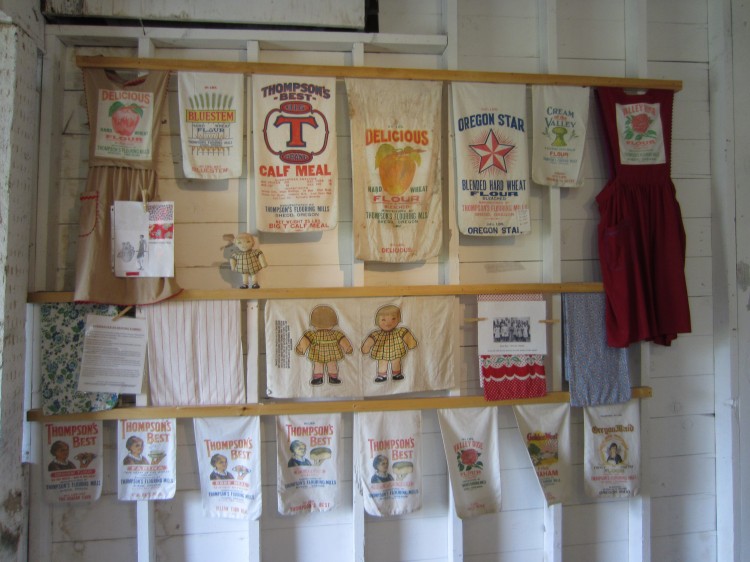
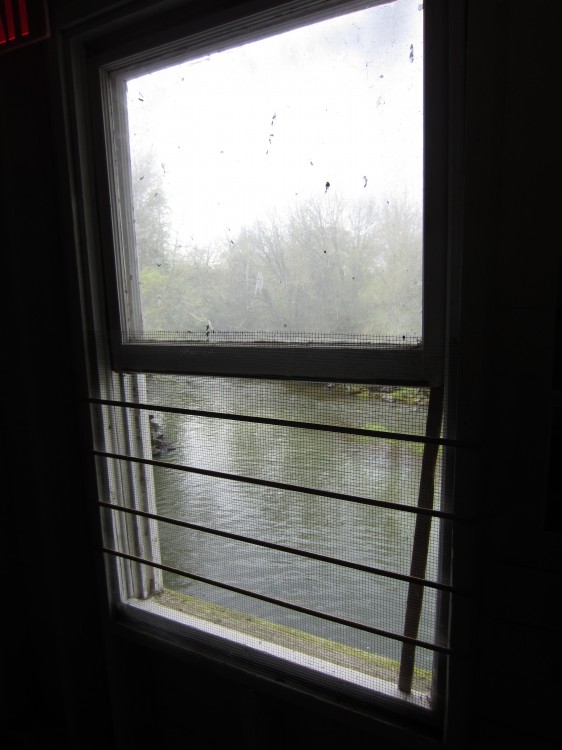
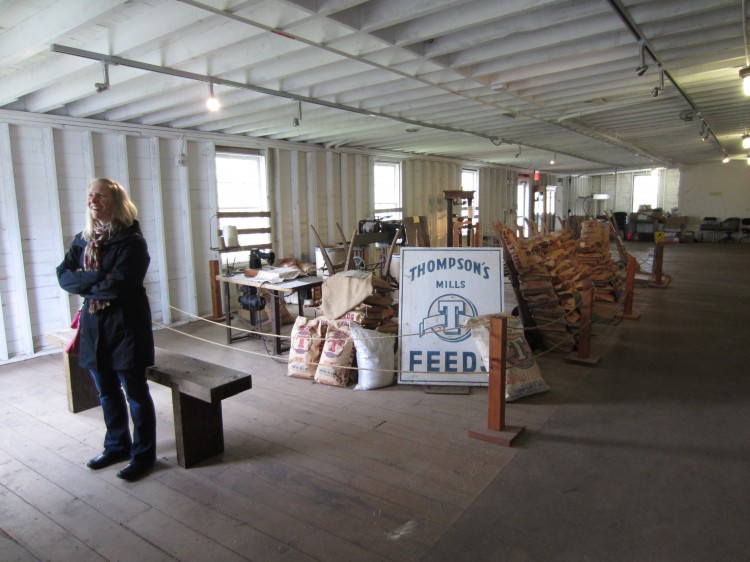
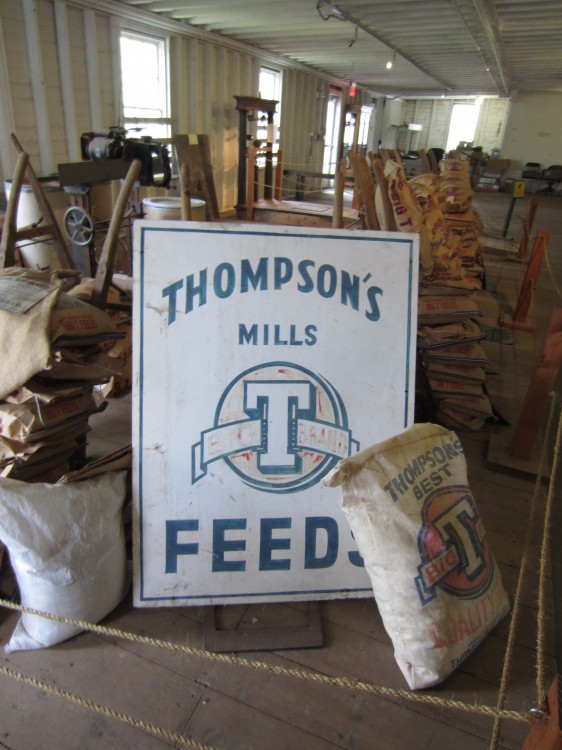
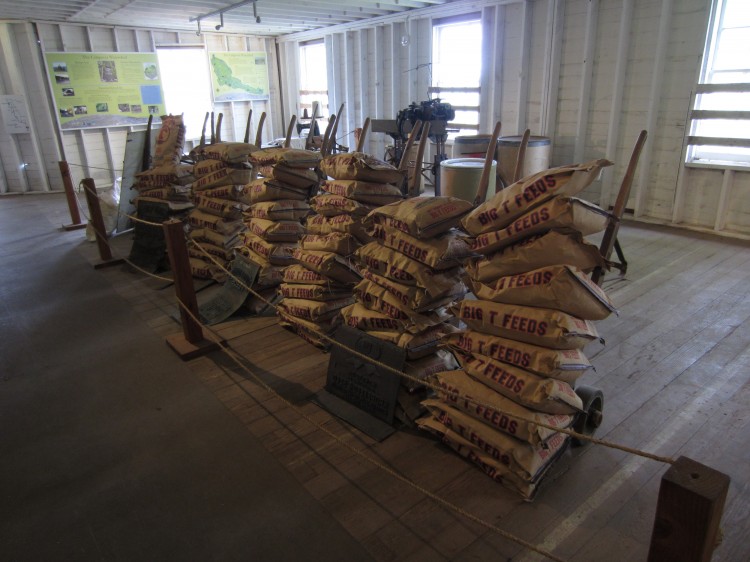
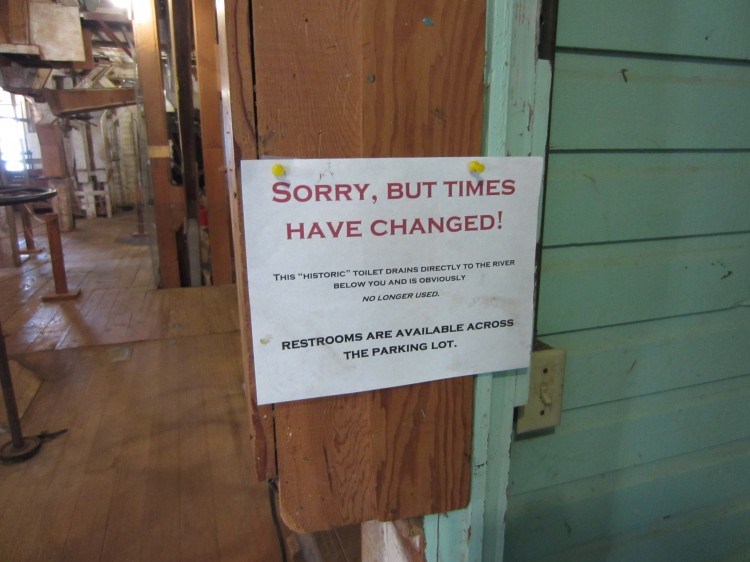


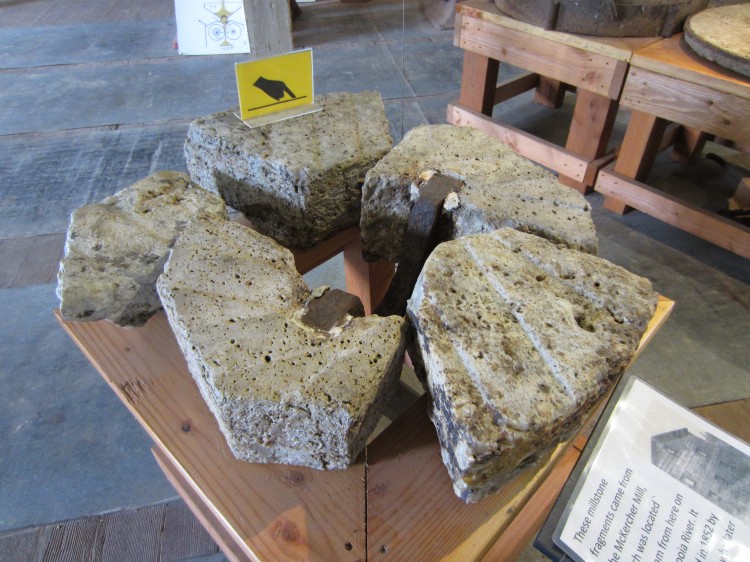
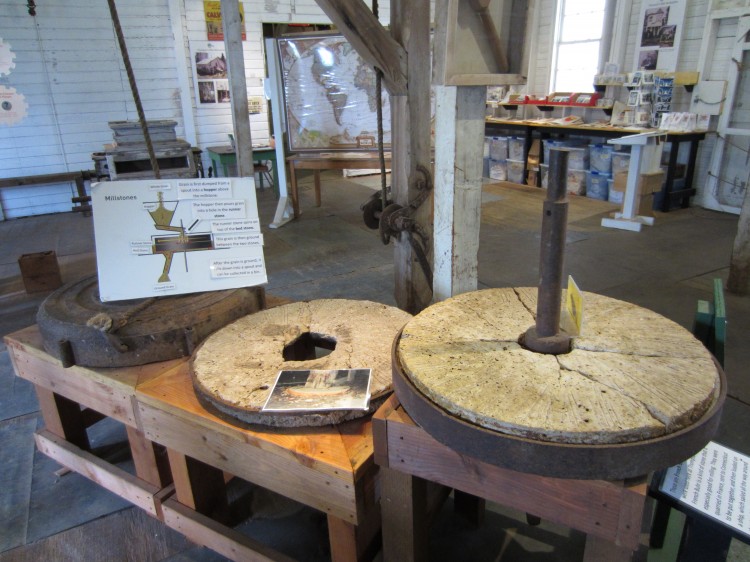
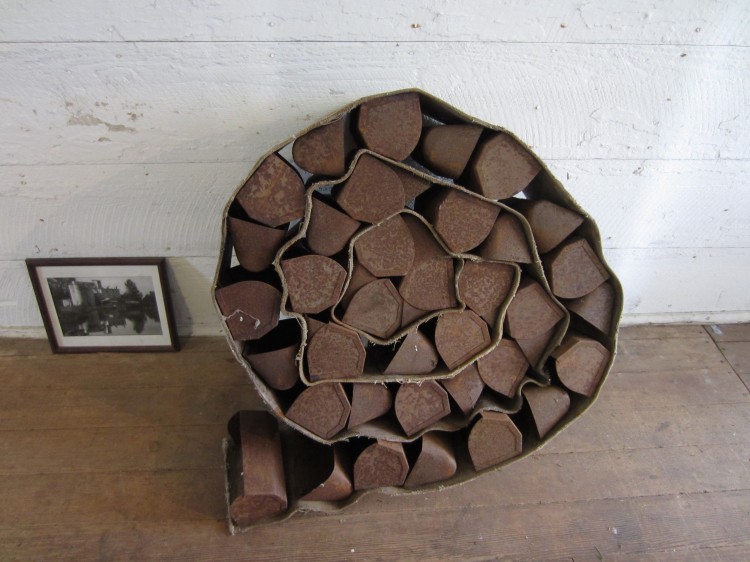
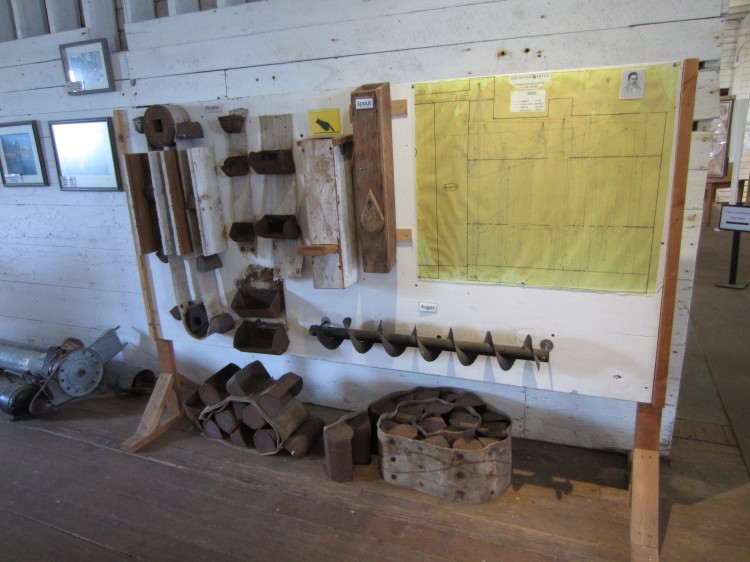
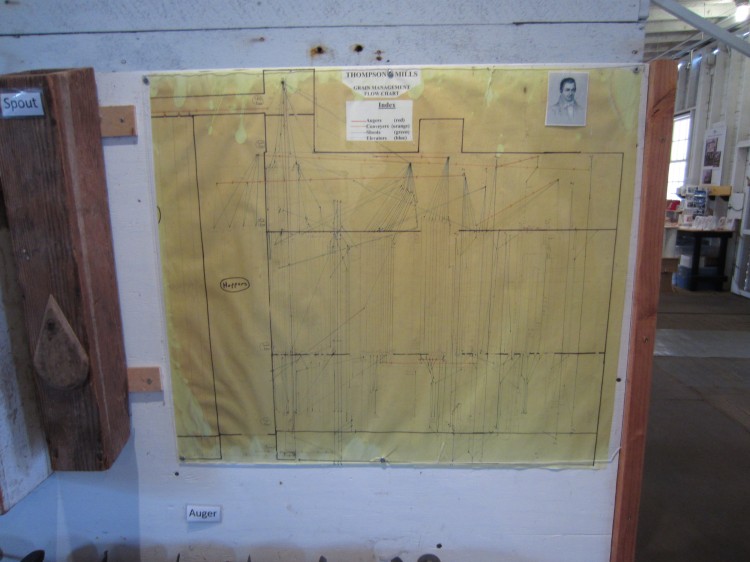
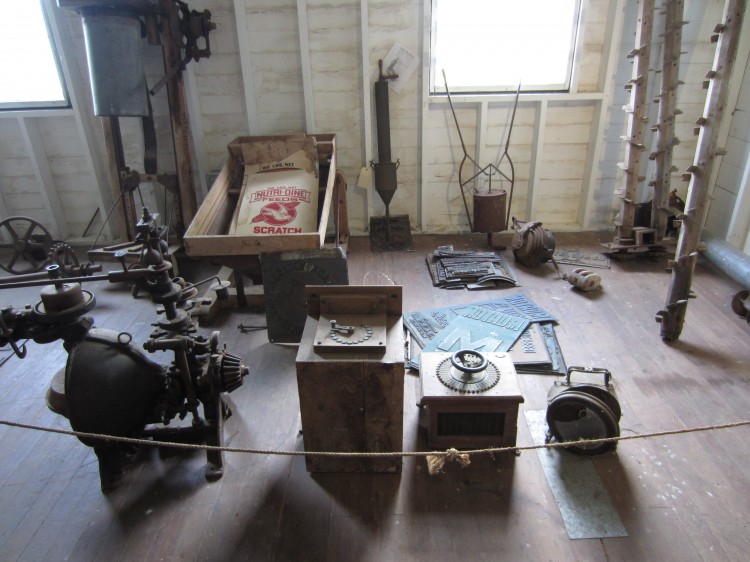
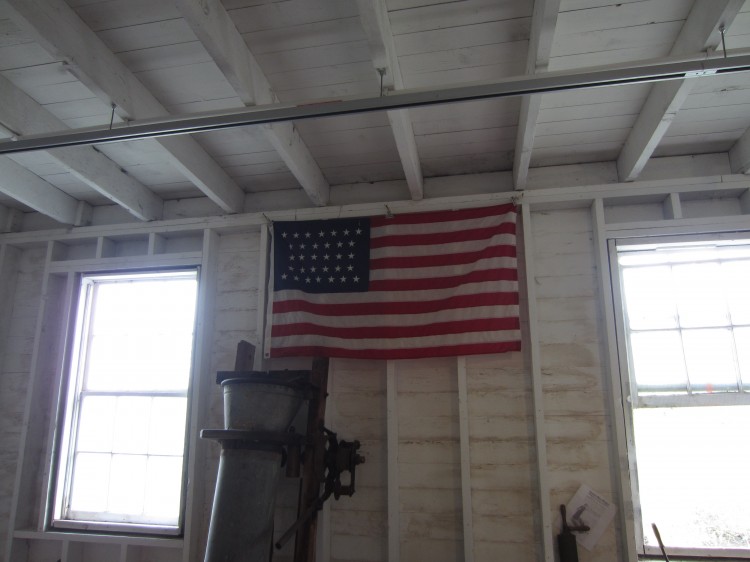
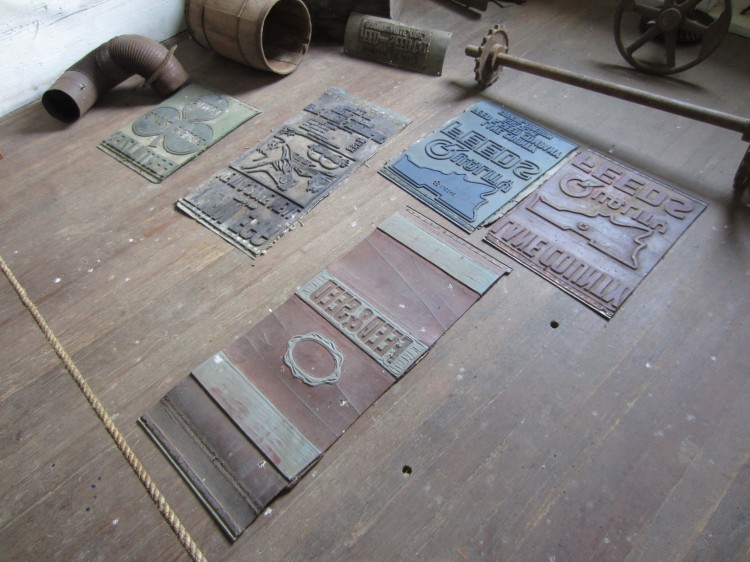
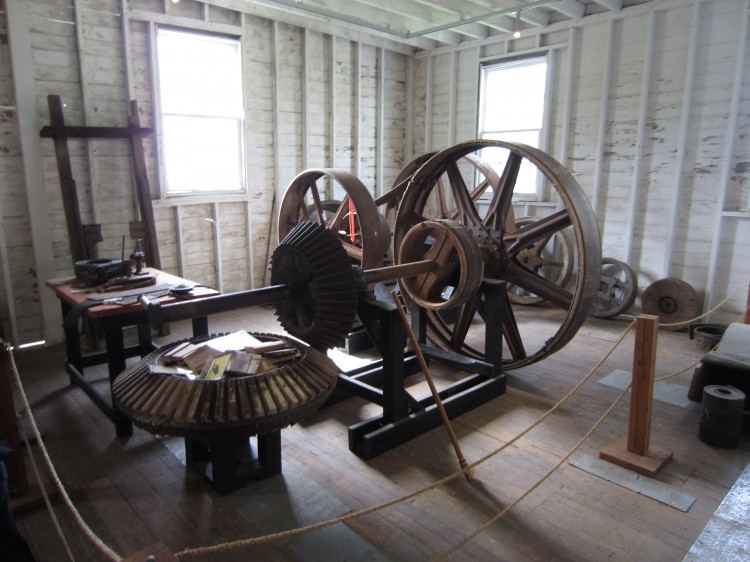
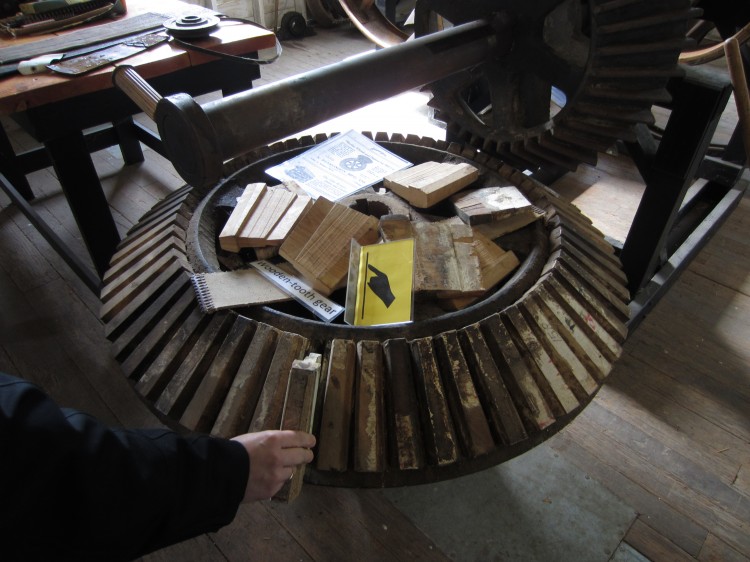
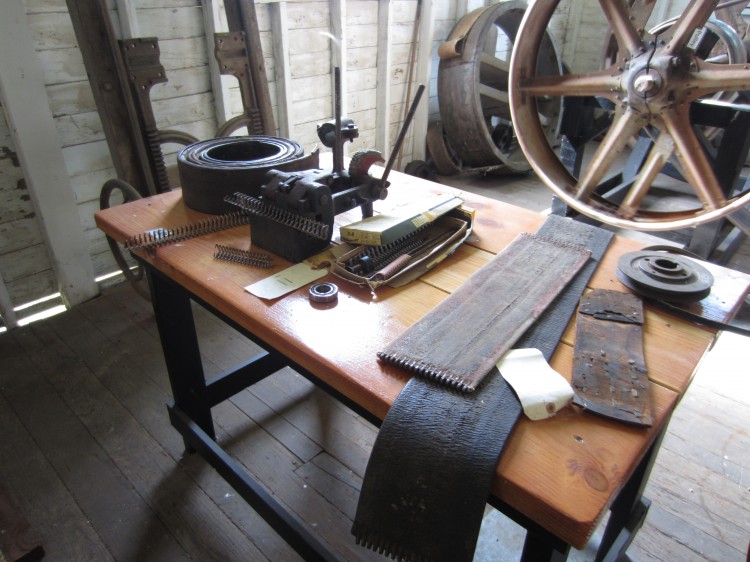
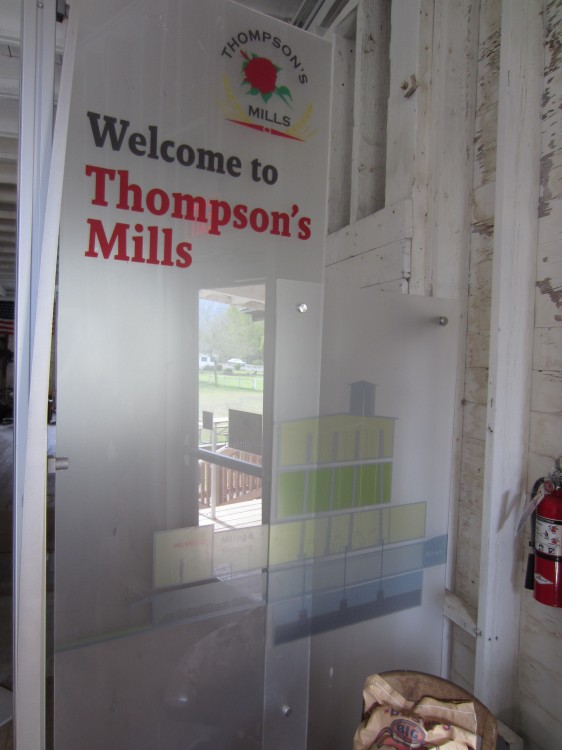
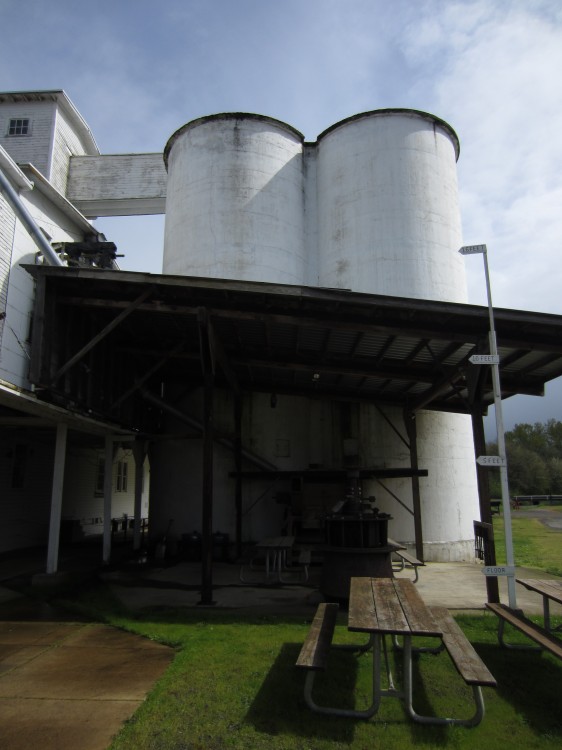
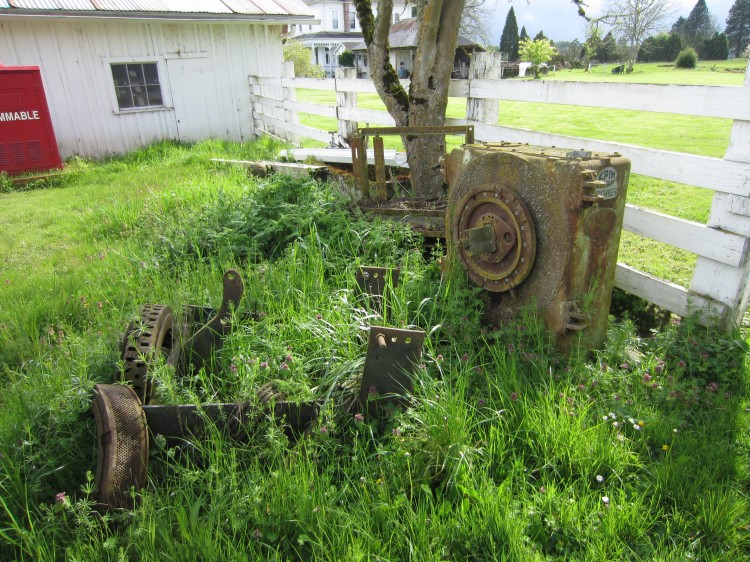

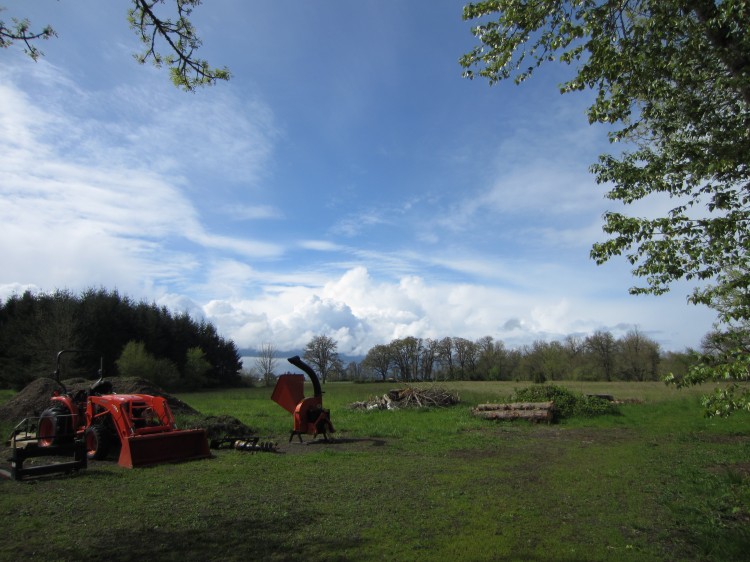

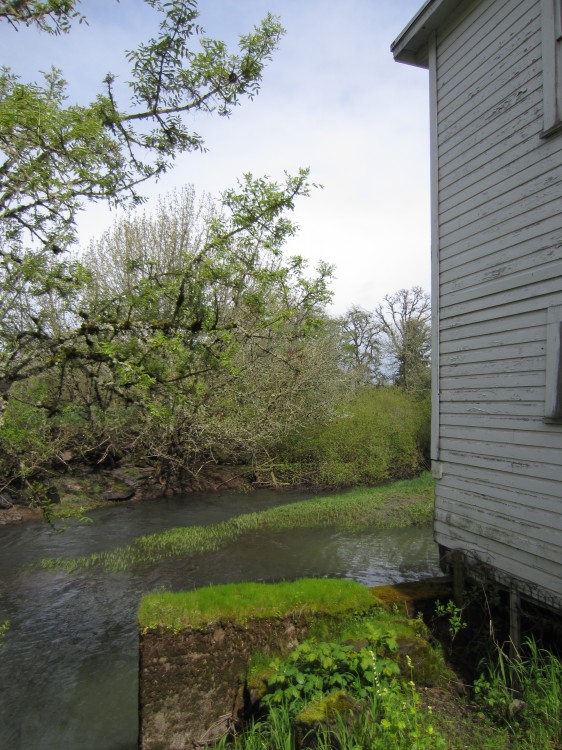
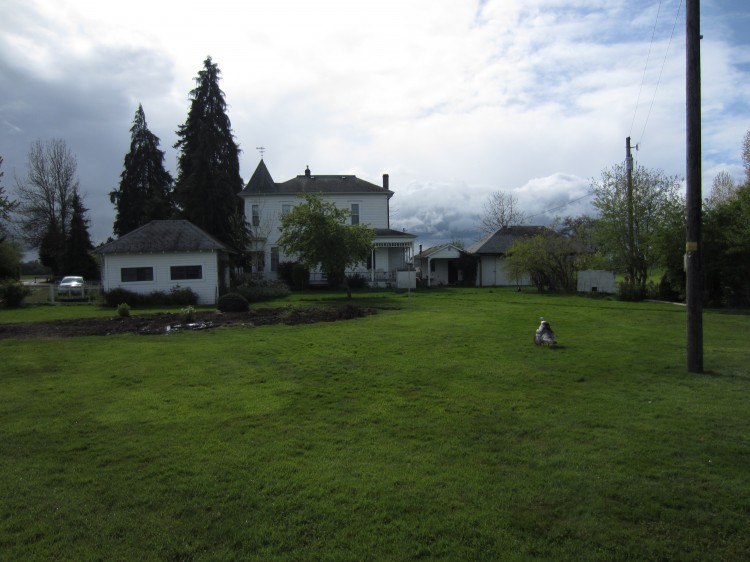
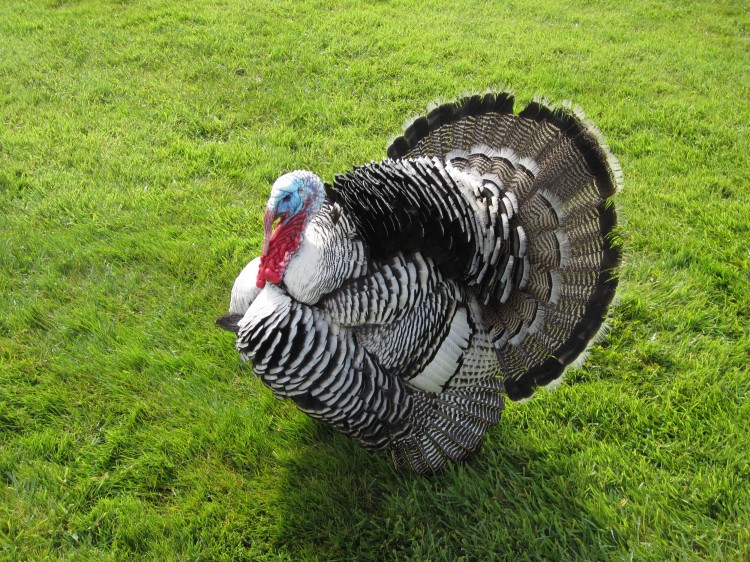


What great pictures! I worked at this park for a couple of years, so it was really great to take a trip down memory lane. Thanks!
No problem, Daryl! What are the off-limits floors like in the mill? I am really curious to see what the upper floors look like.
Cheers!
Douglas
Excellent treatment. I am currently at TMSHS once a week, contributing bird counts for the OSU Oregon2020 citizen science program. I keep meaning to take the tour, but I’ve always had to get back to the office, and back to work. Now I know what I’ve been missing, and will make time.
FYI, Tom is still there, still helpful by even Ranger standards, and is doing a lot of external improvements, judging by your 4/14/13 photos and what I’ve seen beginning 6/21/13. I’ve no idea what he and the park volunteers have done on the inside, but intend to find out.
Even more FYI, ODFW was, at one point (several years ago) counting Steelhead redds (spawning sties) on the Calapooia River. Those data may be available, and might provide another perspective on possible benefits the establishment of TMSHS has brought to the central Willamette Valley.
The effort you put into this post is much appreciated.
Hi Greg,
You should most definitely take the tour! It was a great tour with Tom. Please say hi to him for me. I am still meaning to email him about setting up a tour for some mechanical engineering students at OSU.
Cheers!
Douglas
Mrs Martin Thompson was my great Grandmother’s sister. Her maiden name was Sophia Schultz and she came from Germany. Martin came from Sweden. They went to Oregon from Iowa where I am from and became owners of the mill. This information is so interesting to our family. My daughters are in Oregon right now and are going to tour the mill on Saturday. We are so pleased there is so much information we can find on the internet. thank you so much.
That’s really neat! The guided tour is very good. If they get the chance to call ahead, they might be able to arrange for an extended private tour of the site.